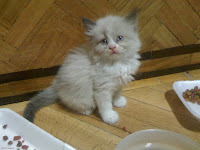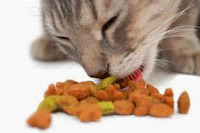cats Care
Tips for using healthy natural flea control
Fleas are parasites that don’t just agitate your cat--they can also cause more
serious problems like anemia and tapeworm.
If you don’t use the chemical flea control, what options are left?
Unfortunately, most of the natural flea control products on the market may
not be healthy for cats!
Let me explain why and then I’ll tell you what I like to use instead...
1. Avoid herbal essential oils. Most natural flea control products have herbal
essential oils in them, which are now considered toxic for cats. In was recently
discovered that cats are deficient in a liver enzyme called glucuronyl
tranferases, which is needed adequately detoxify many compounds. Essential
oils contain terpenes, and cats don’t have enough of the liver enzymes needed
to break the terpenes down either.
2. Avoid garlic. Many of the natural flea products have garlic as a main
ingredient. Because of what we now know about garlic causing hemolytic
anemia in pets, I won’t use garlic for flea control either. We don’t know exactly
what amount causes it, but if I’m going to be using flea control regularly, I
don’t want to risk the accumulation. Garlic may be perfectly safe in tiny
regular amounts, but until I am absolutely sure, I prefer to avoid it.
So here’s my favorite alternative flea control
Many years ago, I stumbled upon the B-vitamin flea repellent method and was
surprised it worked. I was giving my cat a B-vitamin-filled wafer for pets and
she didn’t get fleas even though another cat in the house had them.
Since then, I’ve shared this tip often and continue to hear that it works for
others. I have also heard of holistic vets recommending it.
B-complex, taken in the right dose, somehow makes the body repel fleas and
ticks. It can take up to 10+ days to take effect. It just works.
Flea Treats are a B-vitamin-based “treat” that’s easy to use because most cats
love the taste. It comes with a money-back guarantee and also guards against
ticks.
Just give the tablets to them with their food each day – especially during flea
seasons — and the repellent ability kicks in about 10 days later.
Another option--especially if there are yeast allergies
I’ve seen only one bad consumer review of Flea Treats: someone gave it a low
rating because their dog had an allergic reaction to it. I’m sure the dog was
allergic to the yeast in the product, as yeast allergies are more common in dogs
than cats.
But, if your cat has a reaction to yeast (e.g., digestive or skin flare-ups), Flea
Treats won’t be right for her.
You can do this instead: Mix a 1/8th capsule of Jarrow B-Right into food daily
(divided over 2 meals is ideal), at least during flea seasons. Jarrow B-Right is
recommended because it’s one of the few quality choices that don’t contain a
lot of other substances that may not be good for your cat.
Just “eyeball” the 1/8th amount. B-vitamins are water-soluble and don’t
accumulate in the body, so a little more here and there is not considered a problem.











